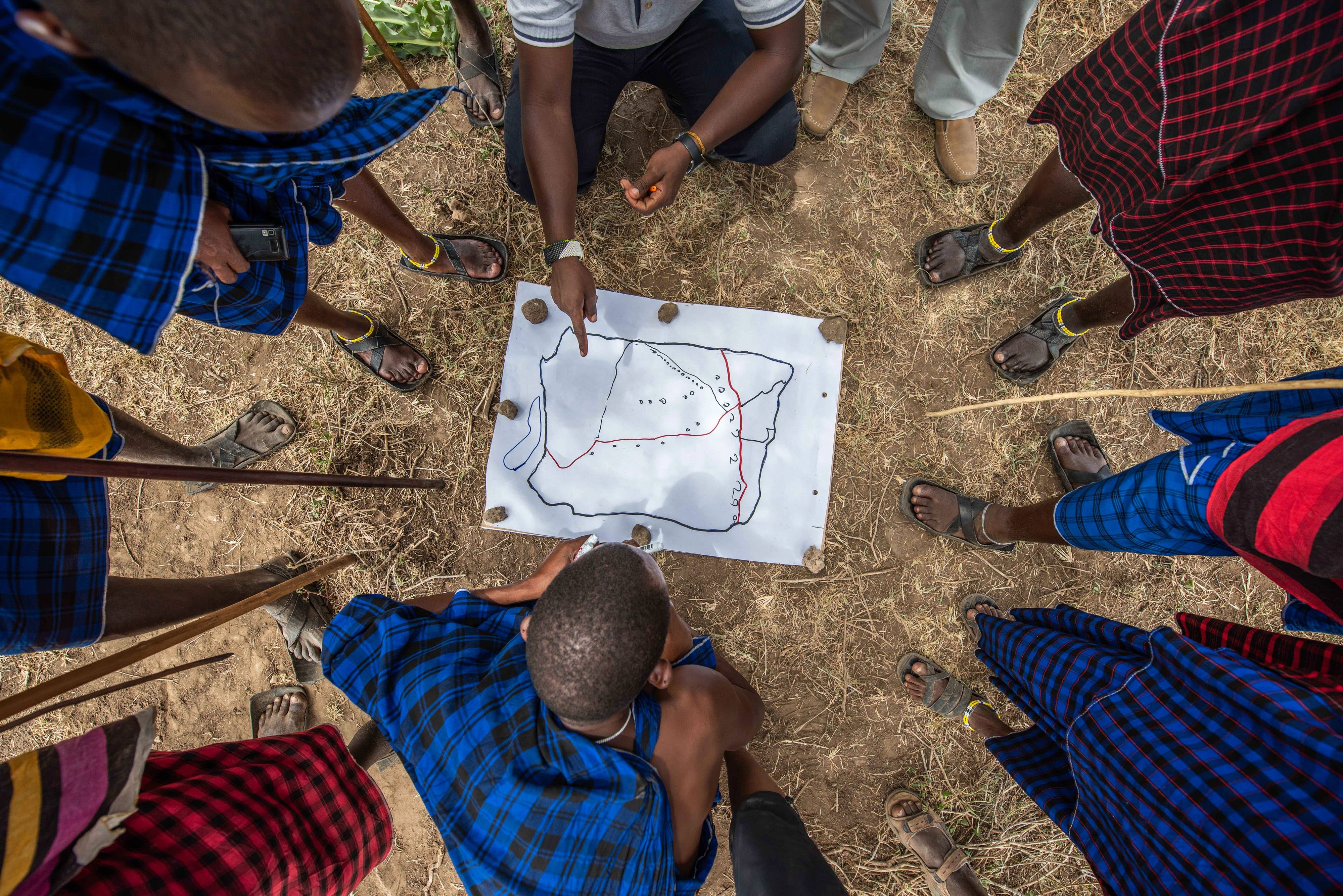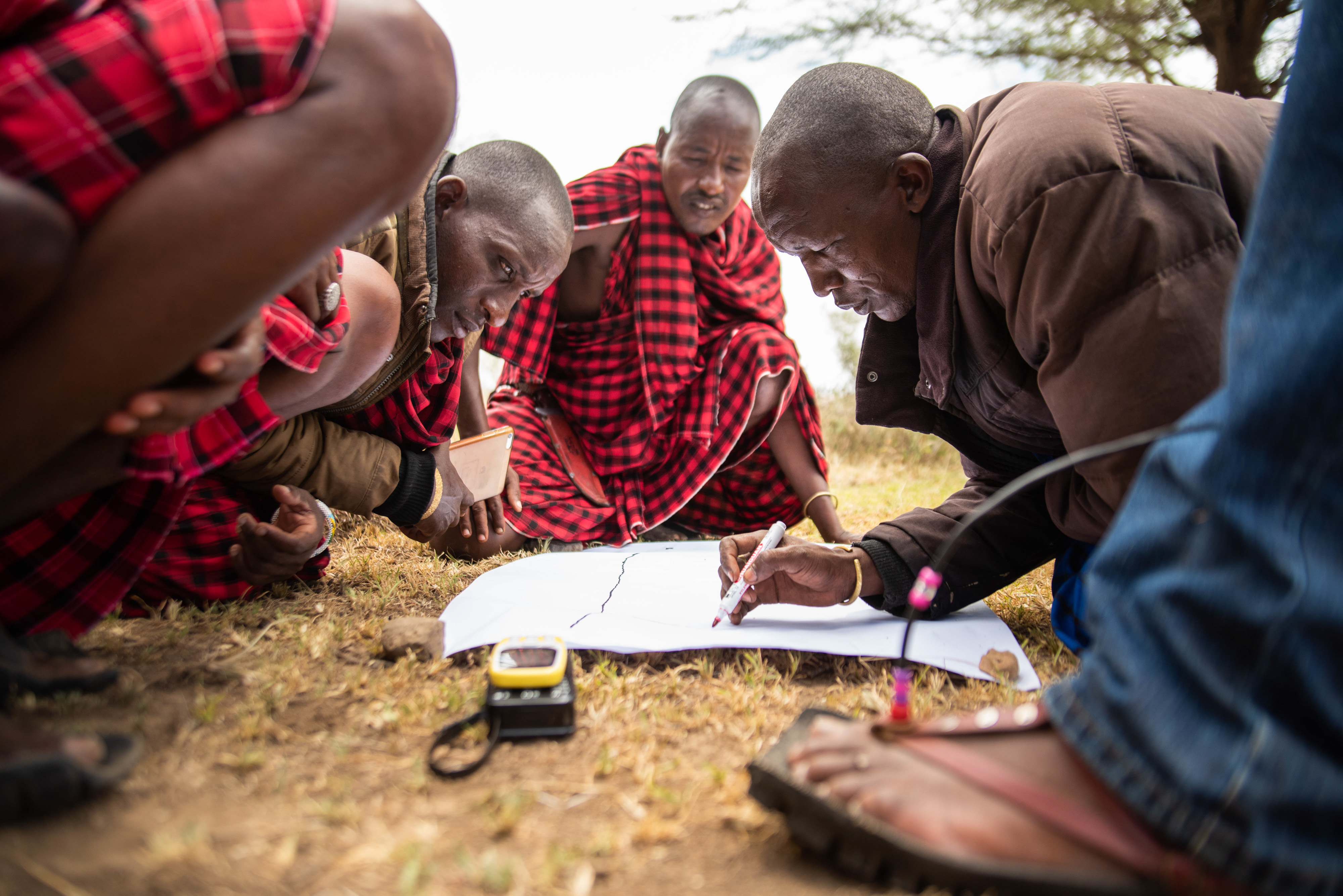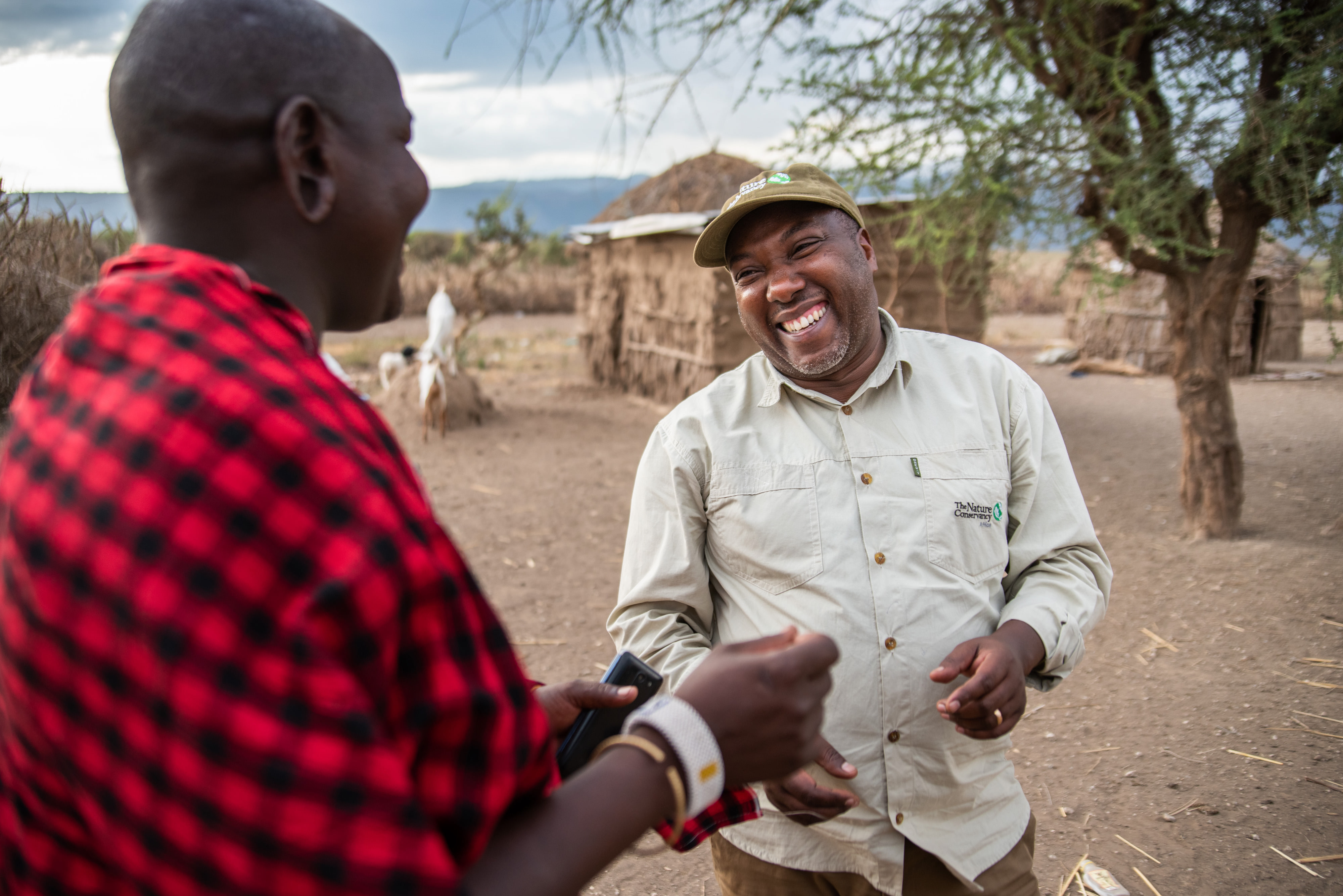In this part of northern Tanzania — between the world-renowned Mount Kilimanjaro and Serengeti national parks — life really boils down to one thing: grass. Keeping livestock is a lifestyle to the pastoralists here, and ensuring there is enough quality grass in both the dry and wet seasons for their cows, sheep, and goats is getting harder and harder.
Unregulated grazing, frequent and longer droughts, increased numbers of livestock and a smaller grassland range, and more invasive plants have created erosion and reduced the availability of quality grass species. Pastoralists and wildlife are in direct competition for the remaining grass and water.
It’s against this backdrop that TNC and nine other partners in the Northern Tanzania Rangelands Initiative (NTRI) have been supporting communities to manage their lands well — for themselves, their livestock, and the wildlife they share them with.
Communities play a critical role in conserving the country’s iconic wildlife species and the tourism industry: Roughly 80 percent of wildlife in northern Tanzania depends on community or private lands for grazing and calving. NTRI’s Rangelands in Transition report shows that community-led initiatives are delivering positive outcomes for both people and wildlife.

A new grassland management program is just one way that NTRI is offering new hope to pastoralists while addressing threats to the ecosystem. Forty-three pastoralists from Selela village — a community of at least 5,000 people spread across more than 100,000 acres — were formally trained on concepts fundamental for regenerating and maintaining land health, including herding village cattle together as one herd and directing cattle to specific grazing blocks for set lengths of time.
The trainees recognized that degraded rangelands can not only be restored, but can be continuously improved through the proper implementation of seasonal grazing plans. After the training, they presented plans to the village general assembly for approval, and the entire community is working together to implement grazing plans that allow grass to recover.
Naronyo Nang’oiho, 41, is a traditional leader in Selela, where he grew up in a pastoralist family. He now has two wives and 10 children of his own. He is a well-respected livestock keeper with more than 500 cows, and he also grows beans and maize.
“It is true I love cattle, because without my cattle there is no life,” Naronyo says. “Now we have combined indigenous Maasai practices and used these to partition our grazing areas into blocks to help us better manage the grasslands.
“We have a Maasai saying that goes: When there is grass in plenty, everything is available in abundance.”

As one of three grassland coordinators in the program in Selela, Naronyo goes around the communal grassland area twice every week to monitor progress and ensure that the allocated grazing blocks are being used, and the blocks not allocated for grazing are being protected.
“On some of my visits we sit as a group and I teach them how to apply grassland management practices,” he says. “Sometimes I show up as a surprise to ensure they are following the rules, and when I find anyone going against the agreed practices they receive warnings.”

The community in Selela developed and implemented grazing plans for both the dry (June-October) and wet seasons (March-May). After the first year, the villagers are already starting to see results. Livestock owners noted that the grass remained available longer during the dry season and that their animals remained healthy. Despite limited rains coming very late in the season, no animals were lost to malnourishment. As an added benefit, livestock owners did not have to provide supplementary maize feed for their animals.
TNC has played a critical role in this program by leveraging funding, coordinating partners, contracting technical experts, and monitoring the program's implementation, effectiveness, and results in a total of three communities so far. By providing ongoing coaching and mentoring for these communities, and by supporting them to establish a network of sharing, we hope to help build and sustain a critical mass for changed rangeland management in northern Tanzania.
This work is being conducted in part with the generous support of an anonymous donor, the United States Agency for International Development, and other partners.
